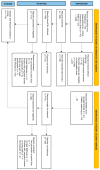Technologies for Evaluation of Pelvic Floor Functionality: A Systematic Review
- PMID: 38931784
- PMCID: PMC11207910
- DOI: 10.3390/s24124001
Technologies for Evaluation of Pelvic Floor Functionality: A Systematic Review
Abstract
Pelvic floor dysfunction is a common problem in women and has a negative impact on their quality of life. The aim of this review was to provide a general overview of the current state of technology used to assess pelvic floor functionality. It also provides literature research of the physiological and anatomical factors that correlate with pelvic floor health. This systematic review was conducted according to the PRISMA guidelines. The PubMed, ScienceDirect, Cochrane Library, and IEEE databases were searched for publications on sensor technology for the assessment of pelvic floor functionality. Anatomical and physiological parameters were identified through a manual search. In the systematic review, 114 publications were included. Twelve different sensor technologies were identified. Information on the obtained parameters, sensor position, test activities, and subject characteristics was prepared in tabular form from each publication. A total of 16 anatomical and physiological parameters influencing pelvic floor health were identified in 17 published studies and ranked for their statistical significance. Taken together, this review could serve as a basis for the development of novel sensors which could allow for quantifiable prevention and diagnosis, as well as particularized documentation of rehabilitation processes related to pelvic floor dysfunctions.
Keywords: functionality; influence parameters; pelvic floor; sensors.
Conflict of interest statement
The authors declare no conflicts of interest.
Figures




References
Publication types
MeSH terms
Grants and funding
LinkOut - more resources
Full Text Sources
Medical

